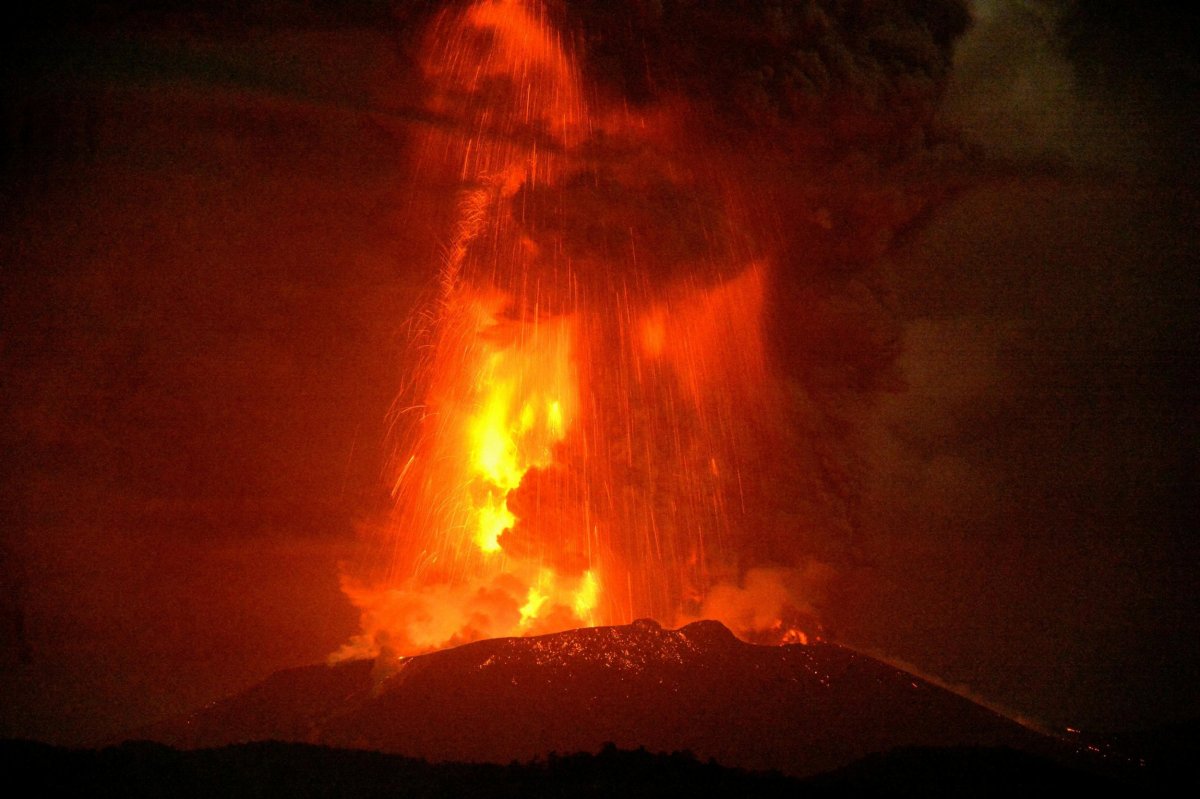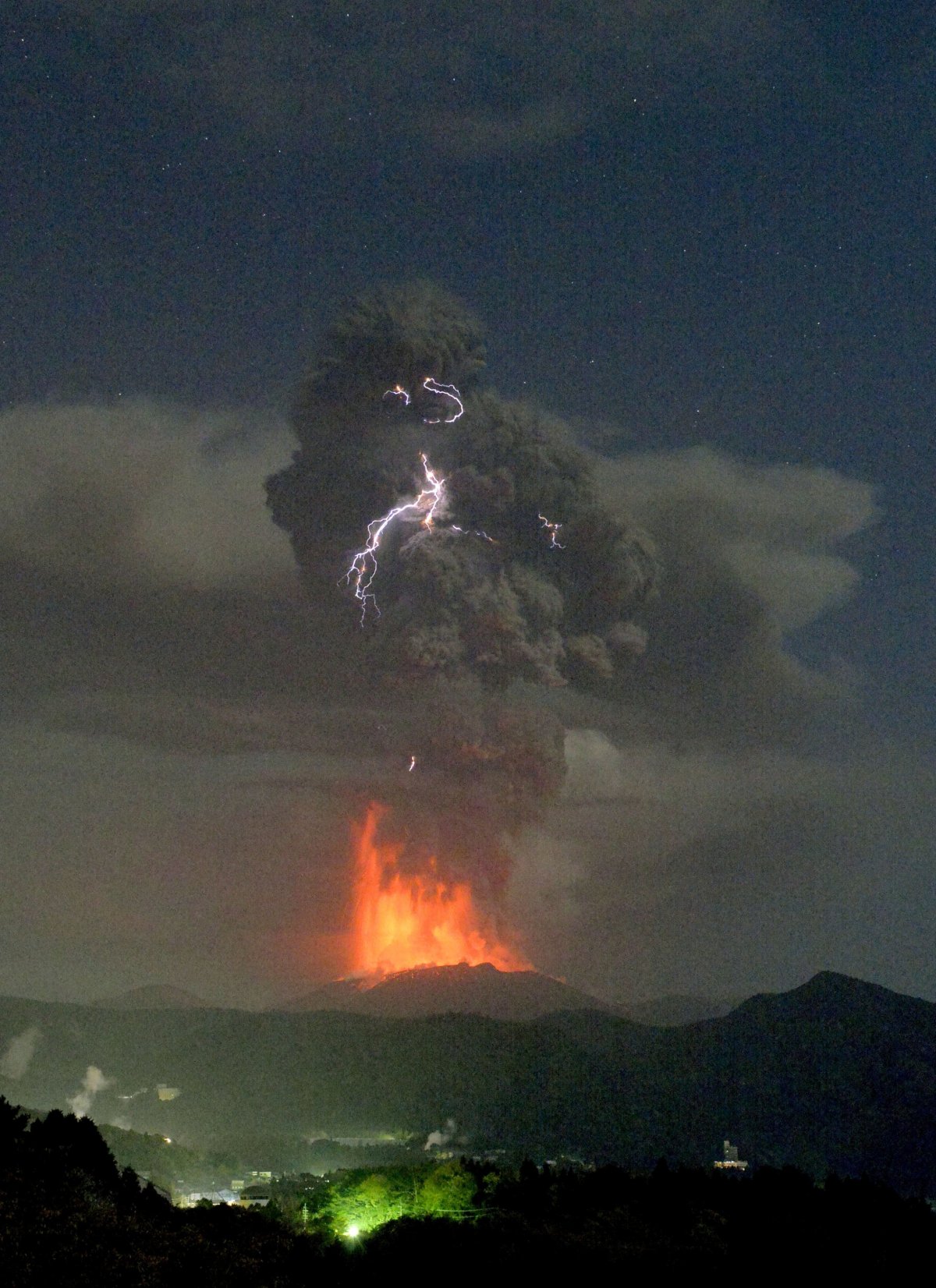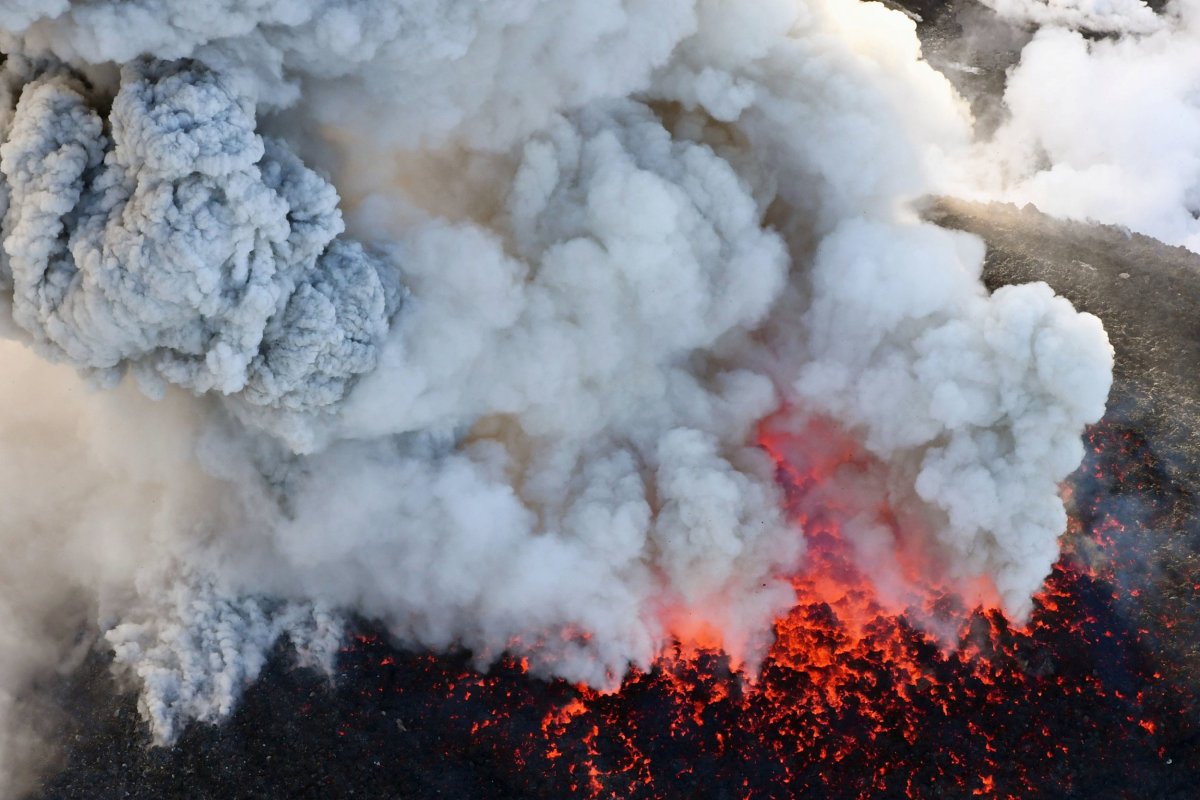On Thursday, Japan's Shinmoedake volcano erupted and hurled hot rocks into the sky, producing a plume of gas thousands of feet high. Shinmoedake became active in October 2017 and has erupted occasionally since then.
"This is a very active volcano, so this is quite normal," Janine Krippner, a volcanologist at Concord University in West Virginia, told Newsweek. She added that Japan in general is quite used to dealing with small eruptions, which makes them better prepared to deal with situations like this.
"As long as people are listening to the local authorities, it's not a huge concern." The Japanese Meteorological Agency, which monitors volcanoes, has warned people to keep away from the crater itself.

Remotely operated news cameras, like those run by the Kyodo media agency, have produced some stunning images of the eruption in progress, including photographs of the volcano spewing ballistics, the scientific term for solid rocks produced during an eruption.
"The rock is so hot that we can see it glowing," Krippner said, comparing it to a stove. "You can actually see the energy." These ballistics are also one of the key hazards of the volcano. During a larger eruption in 2011, ballistics from Shinmoedake hit speeds of 450 feet per second on landing.
Shinmoedake is one of more than 20 vents at a volcanic complex called Kirishimayama, which has erupted dozens of times in recorded history.
Read more: Volcanic Thunder Recorded by Scientists for the First Time
In addition to spotting lava eruptions and clouds of ash, the cameras have caught a glimpse of volcanic lightning. Volcanic lightning is still a bit of a mystery; it's the same basic phenomenon as normal lightning but scientists aren't sure what causes it. Satellites can see lightning flashes from space, which means scientists can use the phenomenon to track new eruptions and follow where ash plumes are drifting.

Scientists are also monitoring how much sulfur dioxide gas Shinmoedake produces, which can measure hundreds of tons per day. "They're very gassy things," Krippner said of volcanoes.
That's not necessarily a bad thing, since studying the released gas can tell scientists how an eruption is changing. "It's telling us about the magma that's coming up," Krippner said. Magma produces different types of gas depending on how far below the surface it has been stored—deeper magma emits more carbon dioxide, shallower magma more sulfur dioxide. "It's definitely a key tool in the toolbox of volcano monitoring."

But there's no ironclad way to predict what will happen next at Shinmoedake or any other volcano. "This could just keep doing this for a while, it could stop—it really depends," Krippner said.
Uncommon Knowledge
Newsweek is committed to challenging conventional wisdom and finding connections in the search for common ground.
Newsweek is committed to challenging conventional wisdom and finding connections in the search for common ground.
About the writer
Meghan Bartels is a science journalist based in New York City who covers the science happening on the surface of ... Read more
To read how Newsweek uses AI as a newsroom tool, Click here.








